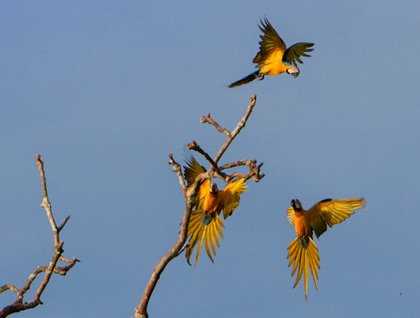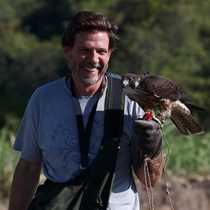Last night the Delfin II sailed upriver through the Ucayali. After a full night of navigating, we arrived to Belluda Cañon, where we spent a very pleasant morning. Waking up early allows us to take advantage of the nicest light of the day, but most important, it allows us to witness the waking up of the jungle.
We went to see a particular area called and “aguajal,” a riverside piece of land with plentiful Mauritia flexuosa palms, or aguajes. The dead aguajes are ideal nesting sites for blue and yellow macaws and for red-bellied macaws. As the colorful birds flew by, the bright blues and yellows almost glowed with the magnificent early morning light.
When most of us think about parrots or macaws, we may have in mind the same birds that we can find in pet stores or zoos. A very different thing is to see these wild living jewels flying over the ecosystem that sustains them. The presence of these birds is a good indication that remote locations, like the Pacaya- Samiria Reserve, still preserves its wild character.
After breakfast we explored the varzea, or flooded forest by foot. We admired the magnificent ficus trees that stand like giant spiders on the jungle. The root systems of these trees are not only amazing to see, but are equipped with complex mechanisms that allow them to survive for about three months, completely submerged by Amazonian waters.
We headed out to El Dorado River in search for wildlife and sunsets. We planned on staying a little later, so that we could head back to Delfin II by nighttime. Our guides, equipped with spotlights and experience, scanned the shorelines for red glowing eyes. We found a few caimans, tree frogs, and nocturnal birds. It is always interesting to see the crepuscular animals like nighthawks starting their feeding activity, followed by the numerous species of bats that start replacing the diurnal birds in the sky. All this had a colorful sunset background of different tones of pinks, oranges, yellows, and reds.







